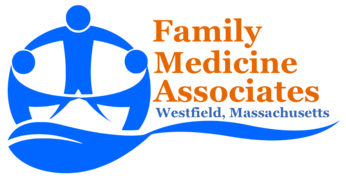In 2019, Medicare beneficiaries whose prescription drug costs reach $3,820 will hit, or fall into the Part D coverage gap. This stage of coverage is known as the Donut Hole or Coverage Gap and can result in significantly higher out of pocket costs for prescription medications.
IMPORTANT: $3,820 is the TOTAL cost of the prescriptions purchased, not the actual amount paid by the beneficiary. In other words, you may have only paid, for example, $600 ‘out of pocket’ costs for your prescription drugs, but if the TOTAL cost of these purchases (i.e., the amount that both you and your prescription drug plan has paid) has reached or exceeded $3,820, you will find yourself in the Donut Hole.
To make this easier to understand, let’s look at all 4 stages of Medicare Part D prescription plans:
- Deductible Stage – Most prescription plans have a deductible, which varies from plan to plan. Some plans don’t have a deductible. If your plan does have a deductible, then once your deductible has been met, you would then enter the Initial Coverage stage.
- Initial Coverage Stage – In the initial coverage stage usually you pay about 25% of the cost of your prescriptions brand name and generic. Then if the total cost of your prescriptions reach (in 2019) $3820 , you enter the DONUT HOLE.
- Donut Hole (aka: Coverage Gap Stage) – The donut hole is the third stage of the prescription plan…this is also known as the coverage gap. When you hit (or fall into…) the donut hole, your cost for brand name prescriptions will stay at about 25% , however, the percent that you (or a beneficiary) will have to pay for generics will go up from 25% to 37% ! You remain in the donut hole until your (combined) out-of-pocket expenses reach $5,100. When you’ve reached this amount, you then go into the fourth stage of prescription plans called the Catastrophic Stage.
- Catastrophic Stage – You will get a major discount on your prescriptions at this point. You’ll either pay 5% of the cost of your prescriptions or $8.50 for brand names and $3.40 for generic, which ever of those options are higher.
So what does this mean for you?
Well, there is good news: The donut hole will actually be going away by 2020 so you can just get rid of the third stage of these prescription drug plans that I just described and everything else should remain the same.
But what if you need help with Donut Hole prescription expenses now?
Help is available! We have some terrific resources, courtesy of Tufts Health Plan:
Help is available if you are in the donut hole or are getting close to it:
There are many resources available to individuals who reach or who are at risk of entering the gap:1)
- Prescription Advantage: An income-based assistance program for Massachusetts residents that may help you pay for your prescription drugs once you are in the donut hole. Your income level will determine the level of assistance you are granted. For more information call 1-800-AGE-INFO (1-800-243-4636) TTY 1-877-610-0241, or visit www.mass.gov. Younger people who have a disability who meet income and employment limits may also be able to get Prescription Advantage.Prescription Advantage may help pay all or part of the Medicare prescription drug plan’s drug co-payments.Prescription Advantage will also provide an “out-of-pocket spending limit”. Once you have spent enough of your own money to reach this limit, Prescription Advantage will cover drug co-payments for the rest of the plan year.As of April 1, 2019, if you are 65 or older, your countable income must be less than $5,204/month (for an individual) or $7,046/month (for a couple). If you are under age 65 and disabled, your countable income must be less than $1,957 (for an individual) or $2,649 (for a couple).To apply, contact Prescription Advantage Customer Service at 1-800-243-4636 (option 2).2)
- Low Income Subsidy (LIS), or Extra Help: LIS is an income-based assistance program run by the Social Security Administration. If you qualify, you may receive help paying for your monthly premium and prescription drug copays. For more information, contact Medicare at 1-800-633-4227 (TTY 1-877-486-2048), the Social Security Office at 1-800-772-1213 (TTY 1-800-325-0778), or your State Medicaid Office. 3)
- Pharmaceutical Company Prescription Assistance Programs: You may also qualify for help with the cost of certain medications through prescription assistance programs offered by the drug manufacturer. Every drug manufacturer has certain criteria that you must meet in order to qualify for help. If you need assistance, contact Customer Relations.4)
Sources and References
| ↩1 | (2019, January 10) The Donut Hole: A Step-By-Step Explanation Retreived October 5, 2019 from: https://www.tuftsmedicarepreferred.org/members/prescription-drug-coverage/donut-hole-step-step-explanation |
|---|---|
| ↩2 | Mass.gov: Prescription Drug Assistance https://www.mass.gov/prescription-drug-assistance |
| ↩3, ↩4 | (May 2019) MassLegalHelp: What if I cannot afford Medicare? Retrieved October 4, 2019 https://www.masslegalhelp.org/health/cannot-afford-medicare |
